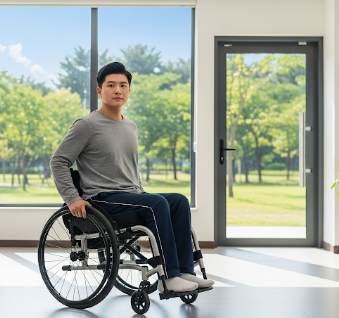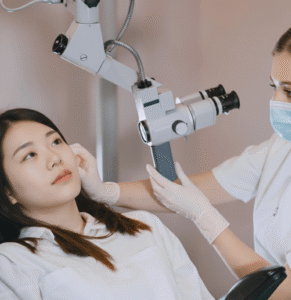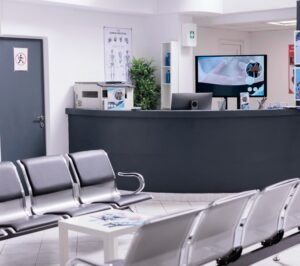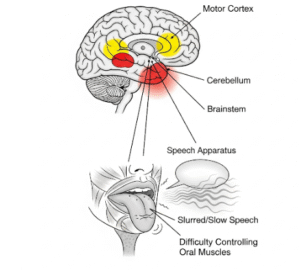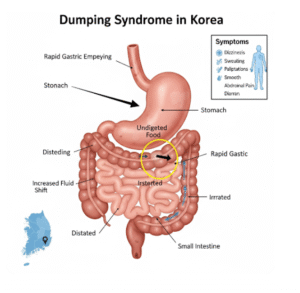Overview
Paraplegia is a medical condition characterized by partial or complete paralysis of the lower half of the body, typically affecting both legs and sometimes part of the lower trunk. It usually results from spinal cord injury, congenital conditions, or neurological disorders. Paraplegia can impact mobility, bladder and bowel control, sexual function, and daily living activities, making early diagnosis and comprehensive management crucial.
In Korea, paraplegia patients receive care from neurologists, physiatrists, and rehabilitation specialists, focusing on maximizing independence, improving mobility, and preventing complications through advanced medical and rehabilitative interventions.
Key Facts
➤ Paraplegia affects movement and sensation below the level of spinal injury.
➤ Common causes include trauma (accidents), spinal cord disease, or congenital defects.
➤ Severity varies from partial weakness (paresis) to complete paralysis.
➤ Associated complications may include pressure sores, urinary infections, and spasticity.
➤ In Korea, rehabilitation programs, assistive technology, and specialized spinal care centers improve patient outcomes.
What is Paraplegia?
Paraplegia is a type of spinal cord injury (SCI) or neurological impairment that disrupts communication between the brain and the lower body.
➔ Characteristics include:
- Loss of motor function in legs and lower trunk.
- Loss or alteration of sensation below the level of injury.
- Impaired bladder and bowel control in many cases.
- Spasticity or muscle stiffness, which may cause involuntary movements.
- Autonomic dysfunction, affecting blood pressure, temperature regulation, and sexual function.
Types of Paraplegia:
- Complete paraplegia – total loss of movement and sensation below injury.
- Incomplete paraplegia – partial preservation of motor or sensory function.
Symptoms Related to Paraplegia
➤ Loss of movement in both legs.
➤ Reduced or absent sensation below the waist.
➤ Muscle weakness, spasms, or stiffness in the lower limbs.
➤ Difficulty controlling bladder or bowel function.
➤ Sexual dysfunction in some patients.
➤ Chronic pain or neuropathic pain due to nerve injury.
➤ Secondary complications – pressure ulcers, urinary tract infections, and deep vein thrombosis.
Causes / Possible Causes
Traumatic Causes
➤ Spinal cord injuries from car accidents, falls, or sports injuries.
➤ Penetrating injuries – stab wounds or gunshot injuries.
Non-Traumatic Causes
➤ Spinal tumors – compressing the spinal cord.
➤ Infections – such as spinal abscess or meningitis.
➤ Degenerative spinal conditions – herniated discs or spinal stenosis.
➤ Congenital conditions – spina bifida or tethered cord syndrome.
➤ Vascular causes – spinal cord infarction or hemorrhage.
Risk Factors
➤ History of trauma or accidents affecting the spine.
➤ Congenital spinal abnormalities or inherited conditions.
➤ Degenerative spinal diseases in older adults.
➤ High-risk occupations or sports – contact sports, construction, or motorcycling.
➤ Infections or tumors that compromise spinal cord integrity.
Complications
Paraplegia can lead to:
➤ Pressure sores – due to prolonged immobility.
➤ Urinary tract infections – from catheter use or bladder dysfunction.
➤ Deep vein thrombosis (DVT) – increased risk of blood clots in legs.
➤ Muscle atrophy and joint contractures – due to inactivity.
➤ Autonomic dysreflexia – dangerous blood pressure spikes in high-level injuries.
➤ Psychological impact – depression, anxiety, or social isolation.
When Should I See My Doctor?
Immediate medical attention is necessary if:
➤ Sudden weakness or paralysis in the legs occurs.
➤ Loss of bladder or bowel control accompanies lower body weakness.
➤ Severe back or neck trauma with neurological symptoms.
➤ Pain, numbness, or tingling progresses rapidly.
➤ Existing spinal disease worsens or new neurological deficits appear.
Care and Treatment
Acute Management
➤ Stabilization of the spine to prevent further injury.
➤ Medications – steroids may reduce inflammation in acute spinal cord injury.
➤ Surgical interventions – decompression, stabilization, or tumor removal.
Rehabilitation
➤ Physical therapy – to maintain muscle strength and prevent contractures.
➤ Occupational therapy – to enhance independence in daily living.
➤ Assistive devices – wheelchairs, braces, or mobility aids.
➤ Bladder and bowel management – catheters, timed voiding, or medications.
➤ Pain management – including medications and nerve-stimulating therapies.
Preventive Measures
➤ Regular repositioning to prevent pressure sores.
➤ Monitoring for infections and early intervention.
➤ Adaptive equipment – for home and workplace modifications.
➤ Psychological support – counseling and peer support programs.
Treatment Options in Korea
Korean medical centers provide comprehensive spinal cord injury care, including:
Diagnostic Services
➤ MRI and CT scans – detailed imaging of spinal cord and vertebrae.
➤ Electrophysiological studies – to assess nerve function.
➤ Neurological evaluation – to determine injury severity and prognosis.
Therapies and Supportive Care
➤ Advanced rehabilitation programs – physical therapy, hydrotherapy, and robotic-assisted walking.
➤ Surgical interventions – spinal stabilization, decompression, and tumor removal.
➤ Assistive technologies – motorized wheelchairs, exoskeletons, and adaptive devices.
➤ Multidisciplinary care – neurologists, physiatrists, urologists, psychologists, and rehabilitation specialists.
➤ Patient and family education – on mobility, safety, and long-term management.
✅ In summary: Paraplegia is partial or complete paralysis of the lower body, often caused by spinal cord injury or neurological conditions. In Korea, early diagnosis, multidisciplinary rehabilitation, surgical interventions, and supportive care help improve independence, quality of life, and long-term outcomes.

